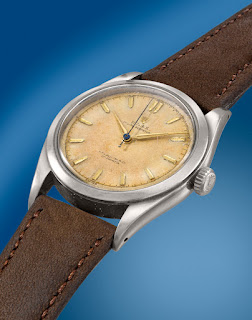The GPHG Academy -
regrouping 650 key figures in the profession worldwide - and the 2022 Jury
chaired by Nick Foulkes attributed 21 prizes including the “Aiguille d’Or”
Grand Prix “best-in-show” distinction, which was awarded to MB&F for the Legacy
Machine Sequential Evo watch.
Akrivia, Bulgari,
Grand Seiko, Ferdinand Berthoud, Grönefeld, H. Moser & Cie, Hermès, Krayon,
M.A.D. Editions, Parmigiani Fleurier, Sylvain Pinaud, TAG Heuer, Trilobe,
Tudor, Van Cleef & Arpels and Voutilainen brands were also honored with one
of the awards.
The 90 nominated
timepieces, including the winners, are on display at the Musée Rath in Geneva
until 20 November 2022. The 2022 winners will also be presented in New York
from December 1 to 4.
THE WINNERS
“Aiguille d’Or” Grand Prix: MB&F, Legacy Machine Sequential Evo
Ladies’ Watch
Prize: Parmigiani Fleurier, Tonda
PF Automatic
Ladies’
Complication Watch Prize: Hermès, Arceau
Le temps voyageur
Men’s Watch
Prize: Akrivia, Chronomètre
Contemporain II
Men’s
Complication Watch Prize: Hermès, Arceau Le temps
voyageur
Iconic Watch
Prize: TAG Heuer, Monaco X
Gulf
Tourbillon Watch
Prize: H. Moser & Cie, Pioneer
Cylindrical Tourbillon Skeleton
Calendar and
Astronomy Watch Prize: Krayon, Anywhere
Mechanical
Exception Watch Prize: Ferdinand Berthoud, FB
2RSM.2-1

Diver’s Watch
Prize: Tudor, Pelagos FXD
Jewellery Watch
Prize: Bulgari, Serpenti
Misteriosi High Jewellery
Artistic Crafts
Watch Prize: Voutilainen, Ji-Ku
“Petite
Aiguille” Prize: Trilobe, Nuit Fantastique
Dune Edition
Challenge Watch
Prize: M.A.D. Editions, M.A.D.1 Red
Mechanical Clock
Prize: Van Cleef & Arpels, Fontaine
Aux Oiseaux automaton
Innovation
Prize: Van Cleef & Arpels, Lady
Arpels Heures Florales Cerisier watch
Audacity Prize: Bulgari, Octo Finissimo
Ultra 10th Anniversary
Chronometry
Prize: Grand Seiko, Kodo
Constant-force Tourbillon
“Horological
Revelation” Prize: Sylvain Pinaud, Origine
Special Jury
Prize: François Junod, automaton-maker
and sculptor






























